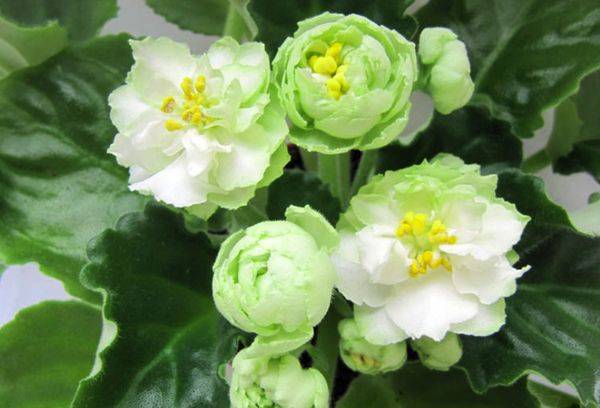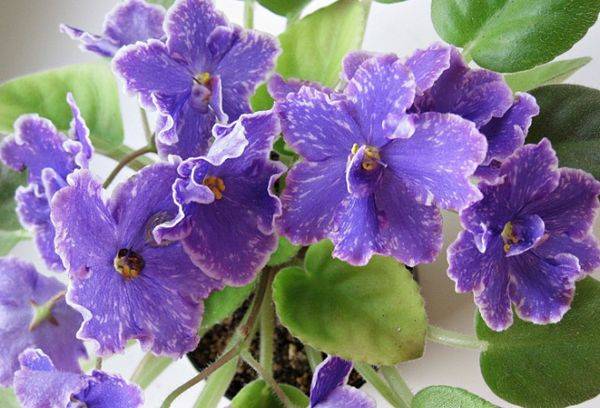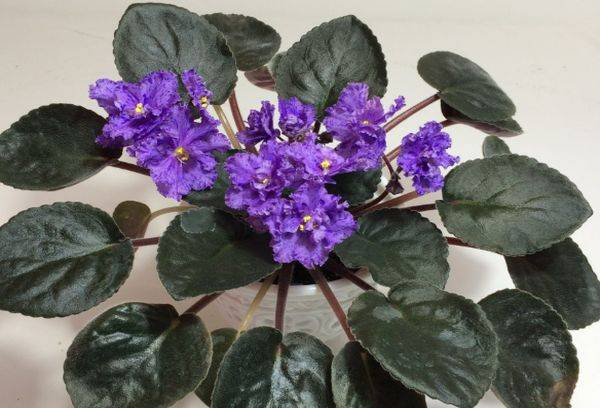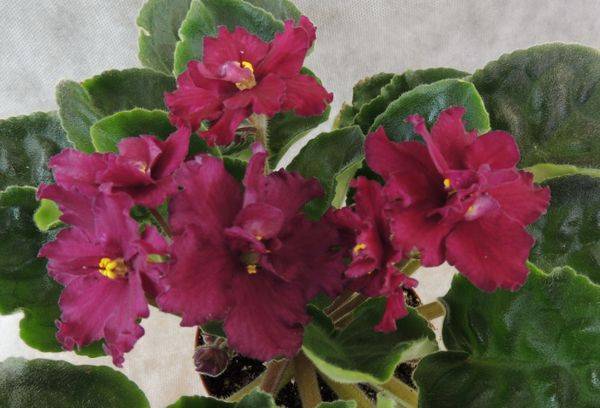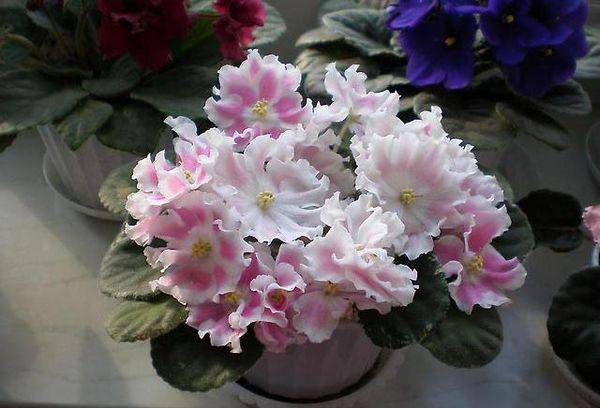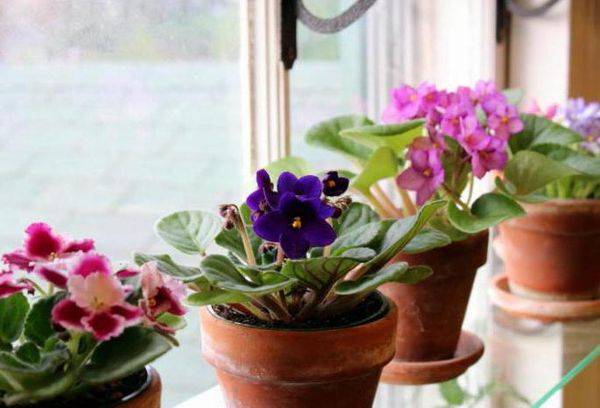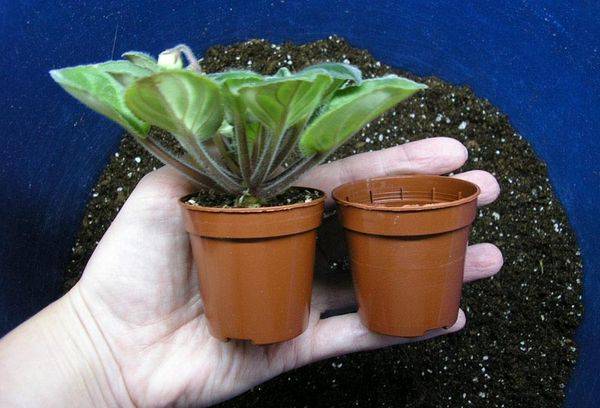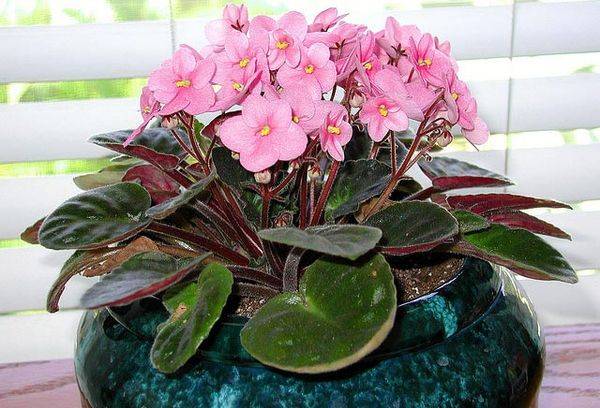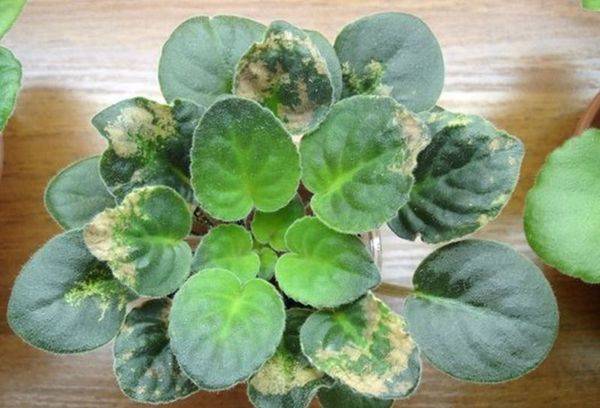Proper care of Saintpaulia: how not to ruin a graceful violet
Content:
Uzambara violet, or Saintpaulia, is very popular among flower growers. Firstly, she is very beautiful, and secondly, caring for her is not difficult. Thirdly, the violet lends itself well to selection, which allowed a large number of varieties to be bred. Everyone will find a flower to their taste. This article has collected the necessary information about the varieties of Saintpaulia, about the proper care of the plant, as well as some entertaining facts.
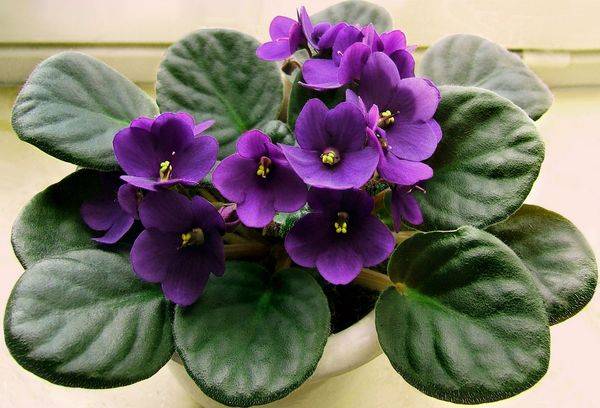
Uzambar violet
Uzambara violet - Saintpaulia
Saintpaulia (Sainpaulia), or uzambara violet, was found in Africa. The plant got its name due to the place of growth - Uzambar mountains (Usambara mountains). The second name is due to its discoverer - Baron Walter von Saint-Paul. It was he who first discovered the elegant plant and sent its samples to his father. Thus began the history of the senpolia. Since 1893, the plant has been demonstrated at exhibitions of flower growers, described in thematic magazines. In the hands of breeders, the senpolia falls in 1898.
Saintpaulia is a low herbaceous plant. It has fleshy leaves of a rounded shape, covered with villi. The leaves are located on thin stems that are collected in a basal rosette. Flowers are formed by five petals. The origin of senpolia is African: it is common in Kenya, Tanzania. African violets love the area with a close location of reservoirs: rivers and waterfalls.
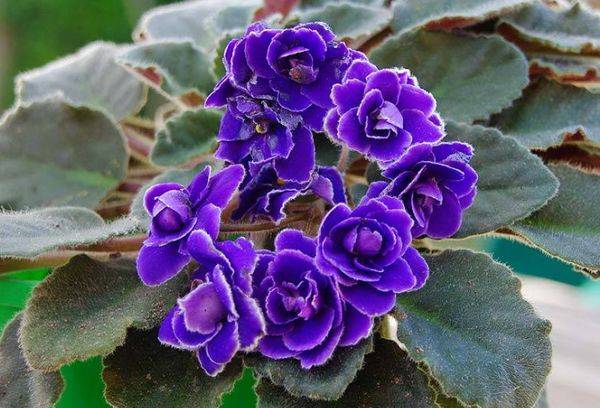
African violet
The senpolia is characterized by:
- small size;
- long flowering - up to 10 months a year;
- a variety of shapes and colors;
- easy care.
Varieties
Senpoly varieties are classified by color, shape and type of flower.
- Simple - violets with five petals, the top two are slightly smaller than the others. The color scheme is diverse: white, pink, red, violet, blue and even green shades.
- Two-tone. On the background color - contrasting spots without clear boundaries. For example, on a white background, blue, pink, raspberry spots may occur.
- Edging. Such senpolia differ rim around the petal. Color can be monophonic, combinations of colors are found. The width of the border depends on the living conditions: in a hot climate, the rim often disappears completely, in a cold climate it reappears.
- Chimera: in the center of each petal is a strip of contrasting color.
- Fantasy varieties Saintpaulia are distinguished by spots and specks of unusual shapes and colors. These violets need attention more than others. If the conditions of detention are violated, the petals lose interesting patterns and become monophonic.
- Star-shaped Saintpaulias so named for their resemblance to a five-pointed star. Their petals are slightly pointed to the edge.
- Half Terry. This group of senpolia has one or two underdeveloped petals in the center of the leaf.
- Terry varieties differ in a large number of additional petals.
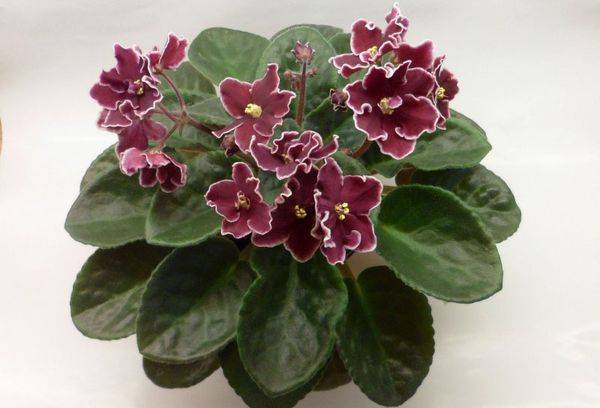
Thick Terry Violet
Senpolia varieties differ in leaf characteristics:
- violets with plain green leaves;
- leaves with a white border;
- there are white and light green spots on the leaf plate;
- a sheet with a pointed tip;
- with the tip twisted up;
- jagged edge of the sheet;
- smooth edge of the sheet;
- in addition, the senpolias are distinguished into “boys” and “girls”: if the sheet is solid, then this is boy, if there is a bright spot at the base of the sheet, then you see girl.
Although the size of the flower depends on the volume of the pot and growing conditions, varietal differences still exist in the size of the plants. So, miniature senpolia grow 15 cm in diameter of the bush. The average violet has a diameter of 20-30 cm.Large varieties can reach 40-60 cm. There are among violets and dwarf plants - plants up to 6 cm in diameter.
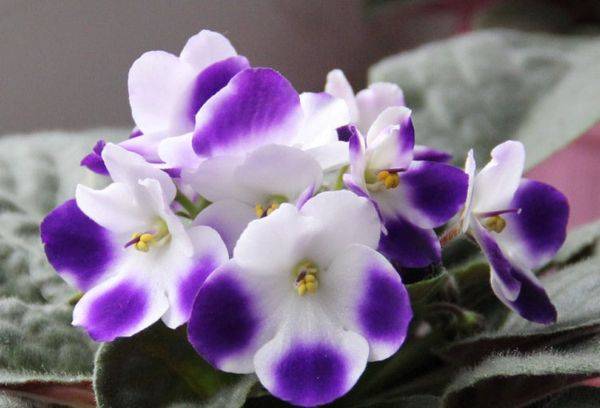
Violet Valeska Violet
The most popular varieties of home senpolia:
- Spring rose. Type - terry. Spring rose got its romantic name due to the abundant flowering of delicate white flowers with a soft green tint.
- Perfect harmony - representative of the fantasy type. It has a bright and memorable color: blue petals are decorated with pink blotches and white trim.
- Stormy weather - Another example of a fantasy Saintpaulia. This violet is the owner of saturated blue petals with blue spots.
- Hot spot - type of semi-double violet. Feature - dark pink petals with a corrugated edge.
- Silver romance - pride of breeders. In the center, the flower is bright pink, lighter towards the edge. The peculiarity of the variety is in the bordering of the petals with light green ruffles. The leaves are also surprising: they are saturated green with a wavy edge.
- Victorian ribbons - representative of chimeras. The main color of the petals is purple, the stripes are white. This contrast makes the variety very bright and attractive.
Accommodation and watering
Growing a plant in an apartment does not require special skills. Pot for uzambar violet will suit both ceramic and plastic. The size of the tank on average should be three times smaller than the outlet. For young plants, a pot with a diameter of 5-6 cm is selected, for adult samples - 10-12 cm. When choosing a container, the characteristics of the variety are taken into account: you can not choose the same pot for standard and dwarf senpolia.
Home care includes watering, maintaining air and soil humidity. Violet African loves uniform and regular watering. The soil should not dry out, but the plant should not be flooded. purityis.decorexpro.com/en/ recommends pouring senpolia with soft, settled, warm water. The jet should be directed strictly under the root. If drops of water fall on the leaves, then they begin to rot. That is why it is not recommended to spray the violet.
Senpolis love bright diffused light. If it is located on the south windowsill, then a little shading is required.
Tip
In order for the senpolia to bloom in winter, you need to extend its daylight hours to 13-14 hours with a lamp.
The optimum air temperature should be constant both in winter and in summer. Saintpaulia comfortably grows in the range from +18 to + 24⁰ C.
Soil and fertilizer
Soil requirements:
- loose
- lets air in
- absorbs water.
On sale there are ready-mixed soils for senpolia. To prepare the substrate yourself, take:
- sheet land - 2 parts;
- humus - 0.5 parts;
- sand - 1 part;
- charcoal - 1 part;
- on a bucket of the finished mixture - 0.5 cup of bone meal and 1 tbsp. a spoonful of superphosphate.
For regular growth and flowering, the senpolia needs complementary foods. Mineral fertilizers are suitable. Top dressing is done once a week from March to September. Adding fertilizer to water for irrigation, reduce its concentration by 6-7 times.
Transplantation and reproduction
Adult plants are transplanted into fresh soil annually. Usually a transplant is done in the spring, but a flower growing in artificial light can be moved at any time. Do not forget to place a fresh drainage layer on the bottom of the pot: expanded clay granules, polystyrene chips, nutshells, pine cones. Ideally, the layer should occupy 1/5 of the capacity.
The propagation of senpolia is carried out in two ways:
- Leafy cuttings. A healthy leaf is separated by an oblique cut. Its length is 3-4 cm. The stalk is placed in water until roots are formed or immediately planted in the ground. Place the stalk in the soil no deeper than 2 cm. The soil is watered with warm water, the pot is covered with a bag to maintain moisture. After 1-1.5 months, the plant should take root and give children. The baby should be separated from the leaf and transplanted into a separate pot. They need 2-3 weeks to warm up.
- Propagation by stepsons. Choose stepsons with 3-4 leaves. The stepson is separated with a sharp knife, rooted in a pot with a substrate for 3-4 weeks in greenhouse conditions.
Diseases and Pests
In the absence of care, the plant is exposed to fungi, bacteria and viruses. Parasites can also catch their eyes on a flower:
- Mealybug. If the pest has settled in the pot, you will notice that the leaves become covered with brown spots and are deformed. The insect is visible with the naked eye in the axils of the leaves and peduncles. Helps processing fitoverm.
- Aphid - an insect of a black, reddish or green shade. Because of it, young shoots die off. It is eliminated with a solution of insecticidal soap (by spraying).
- Spider mite or red arachnoid leaves brown and red spots, respectively. Leaves due to this parasite quickly lose their shape and die. Helps processing fitoverm or actellikom.
Diseases of Saintpaulia:
- Powdery Mildew The causative agent is a fungus that multiplies at low temperature and high humidity. A sign is a white coating on the leaves.
- Fusarium It arises due to watering with cold water, a sharp change in temperature or an overly spacious pot. Sign - petioles become brown, roots darken.
- The appearance of brown-gray fluffy plaque - A sign of the disease is gray rot.
If fungal diseases are detected, the violet is urgently treated with a fungicide, the dead parts are removed and transplanted into fresh and sanitized soil.
Interesting Facts
Some evidence that Saintpaulia is a boring plant:
- Initially, the senpolia had purple flowers. Thanks to the efforts of breeders, senpolis of various shades appeared. Of the latest achievements - salmon and yellow.
- The very first bred variety was the senpolia with red-violet flowers.
- The first terry varieties appeared in 1920.
- By 1946, breeders already had more than 20 varieties of Saintpaulia of various colors. Now there are more than 7 thousand varieties, and according to some sources - up to 32 thousand!
- There is a Senpolia variety with the curious name of Harry Potter. But there is no scar in the form of a lightning.
- There is a version that Saint-Paul discovered a flower while strolling with his bride.
- In floriculture, there is confusion. Saintpaulia and Viola are not the same thing. Plants belong to different families: senpolia - to the Gesneriaceae family, and violet - to the Violet family.
The African guest of home windowsills continues to amaze gardeners with her variability and variety of varieties. Growing a senpolia is a chance for a neophyte of floriculture to engage in an unpretentious plant and achieve at the same time an amazingly beautiful flowering. Even professionals do not bypass the senpolia. Its rare varieties are being hunted, many are ready to buy fresh samples abroad.
